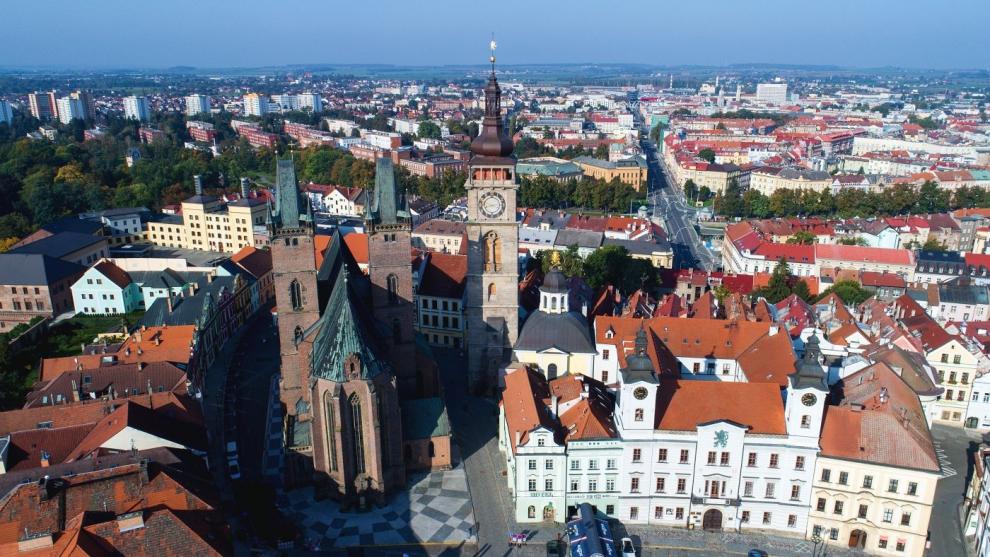Thessaloniki gets ready for its metro launch in November
The underground rapid transit lines have been under construction for almost two decades due to various project delays
 TheMayor.EU logo
TheMayor.EU logo 
The history of Hradec Králové goes back to the Neolithic times, when the first people settled in the area. The city is situated on the confluence of two rivers – Labe and Orlice – and its first inhabitants quickly understood the convenience of this location.
The first mention of Hradec (Hradec hrad) was in 1091 when Hradec Castle was named in Kosma's Czech chronicle, written between 1119 and 1125.
In 1225, the town (civitas) of Hradec itself was first mentioned in a written document (contract), but not with the adjective Králové, which appeared only after the 14th century. This is the first unquestionable source about the existence of the city.
In the Middle Ages, Hradec Králové was the dowry town of Czech queens, with Eliška Rejčka and Eliška Pomořanská being especially fond of it. From the 14th century, the city, which has a compact Renaissance historical core, became a natural, militarily and politically influential centre of the region with a high level of education and culture.
Hradec Králové became a defence fortress in the 18th century, part of the fortification system built by the Austro-Hungarian Empire and served as such until the Battle of Königgrätz in 1866. After the bloody battle the fortress loss its former importance, and the town started to grow beyond its initial boundaries.
Major development came in the early 20th century, when leading architects Gočár, Kotěra, Lyska, and many others, implemented their projects here. A significant number of buildings were completed, that are still well-known around Europe as examples of modern functionalist architecture.
Hradec Králové is located in the Hradec Králové Region of Bohemia, Czechia. It is a statutory city with an area of 105.61 square kilometres and a population of 92,939 inhabitants (CSO, April 2020).
The city is a major academic centre of the Czech Republic, thanks to the University of Hradec Králové with 5 faculties, two faculties of the Charles University (Pharmacy and Medicine), and the Faculty of Military Health Sciences of the University of Defence.
Its economy is dominated by food-processing, photochemical, electronics manufacturing services (EMS) and IT. Manufacturing of musical instruments can also be mentioned among its traditional industries. Its most famous product are the PETROF pianos.

One of the best regional drama theatres in the country, the Klicper Theatre, plays a significant role in Hradec Králové's cultural life. The Dragon Puppet Theatre is a world-class artistic institution.
There is also the Philharmonic, which gives several concerts a week. The Museum of Eastern Bohemia will impress with the great Art Nouveau façade by Jan Kotěra. The Gallery of Modern Art focuses on Czech fine art from the 19th and 20th centuries.
Hradec Králové is also an important sports centre with a swimming pool, a city spa, a winter stadium with indoor halls, football stadiums, and a swimming pool, which comes with a car parking, and many other facilities
From Hradec Králové you can take trips to the Giant Mountains, 65 km away, or to the Eagle Mountains, 40 km away. In the immediate vicinity you can visit many important castles and chateaux. In Třebechovice it is possible to see the world-famous Provost's Nativity Scene.

The White Tower, one of the most prominent landmarks of the East Bohemian metropolis, as well as many Gothic, Renaissance and Baroque buildings (by G. Santini, C. Lurago) are part of the architectural treasures of the city.
One can also admire modern Czech architecture in the style of Art Nouveau and Functionalism by the world-famous Professor Jan Kotěra and his pupil Josef Gočár, whose remarkable urban concept still arouses admiration and was an inspiration for several generations of architects. This served as an inspiration to call Hradec Králové - "The Salon of the Republic".